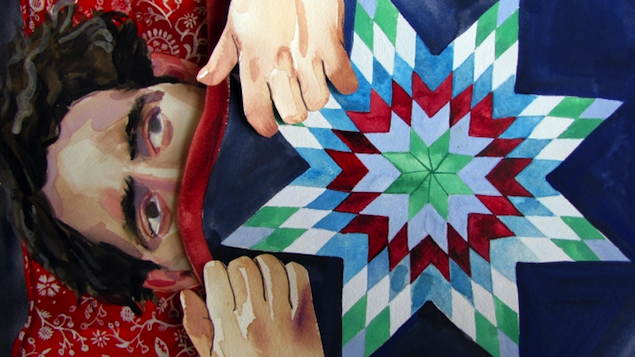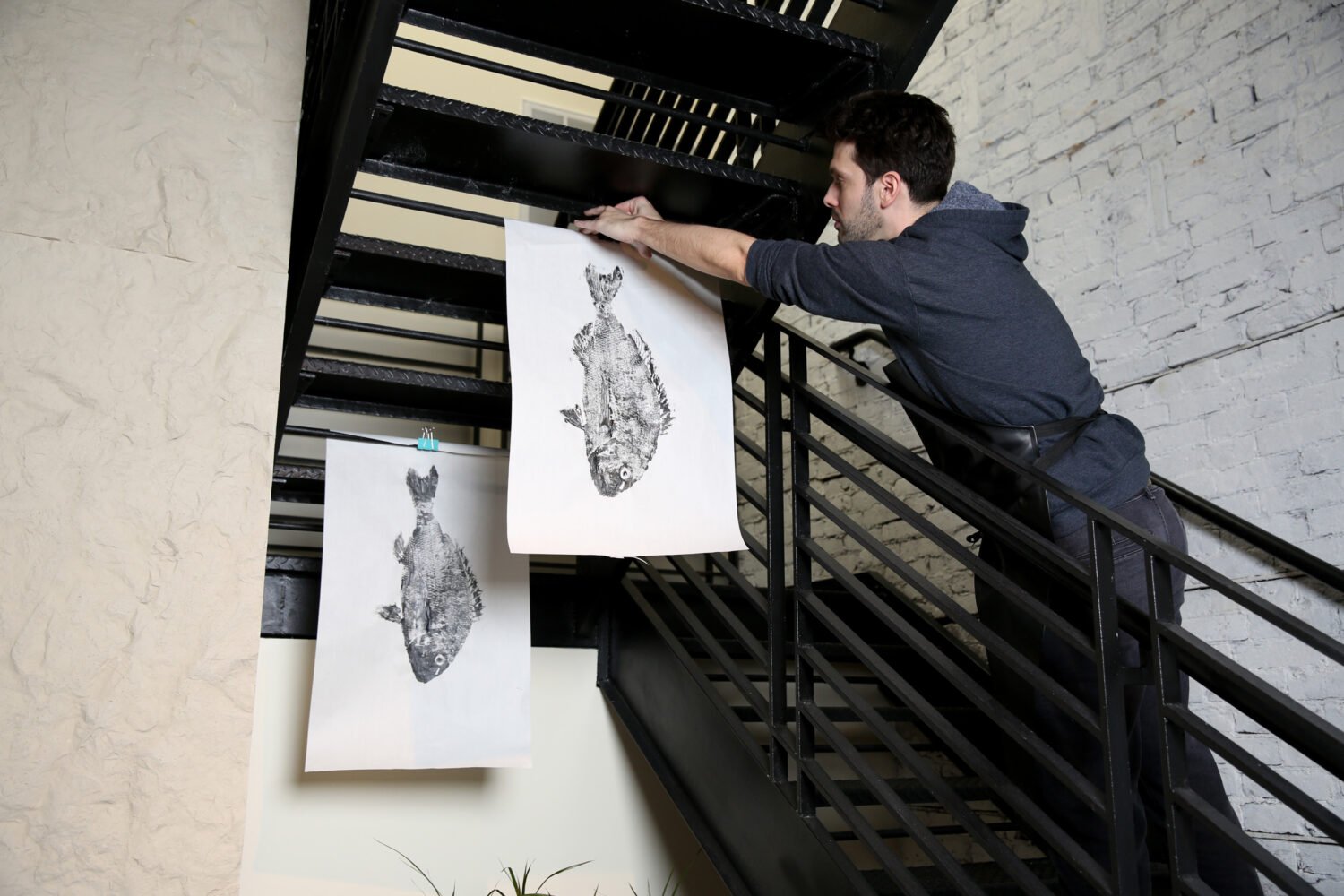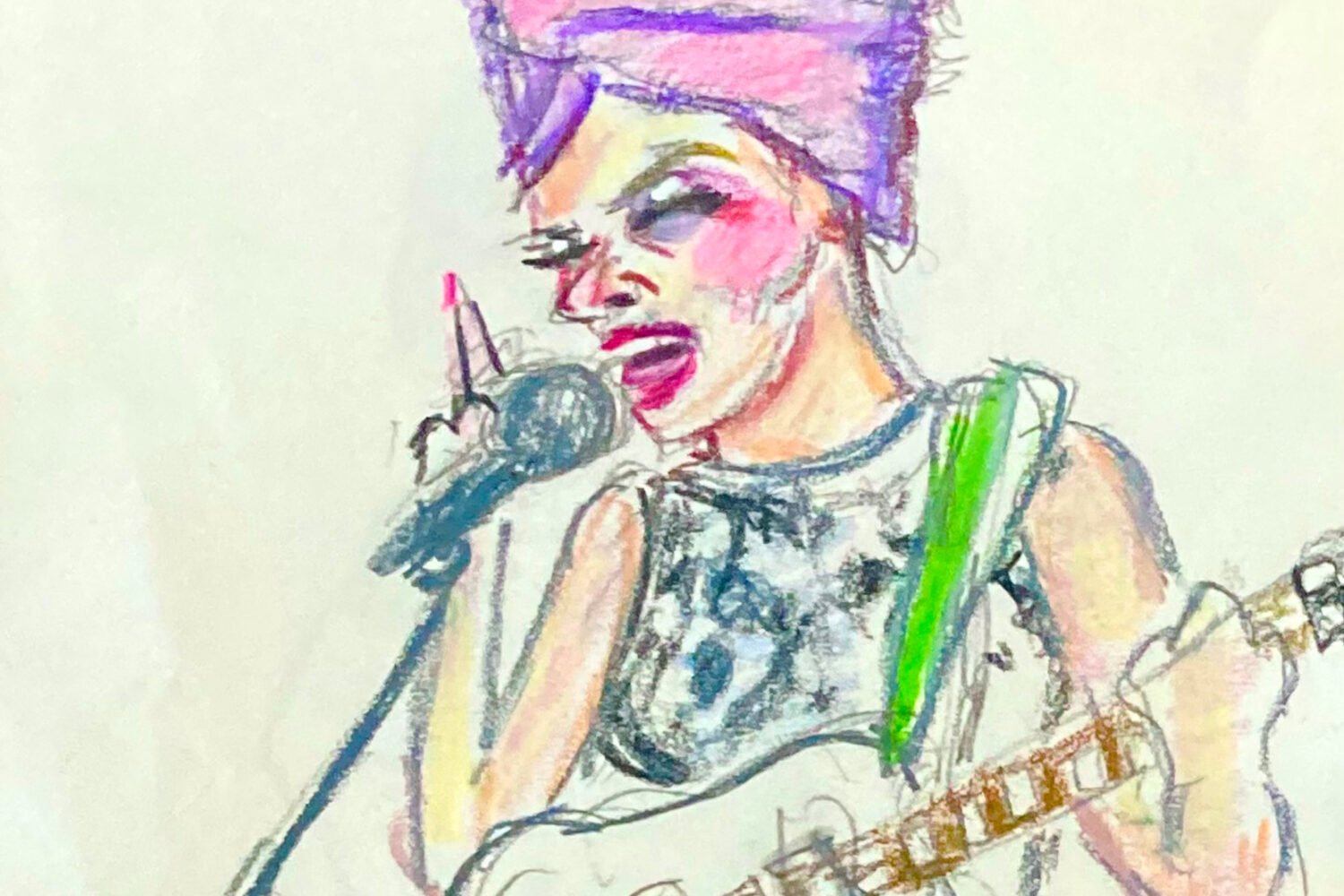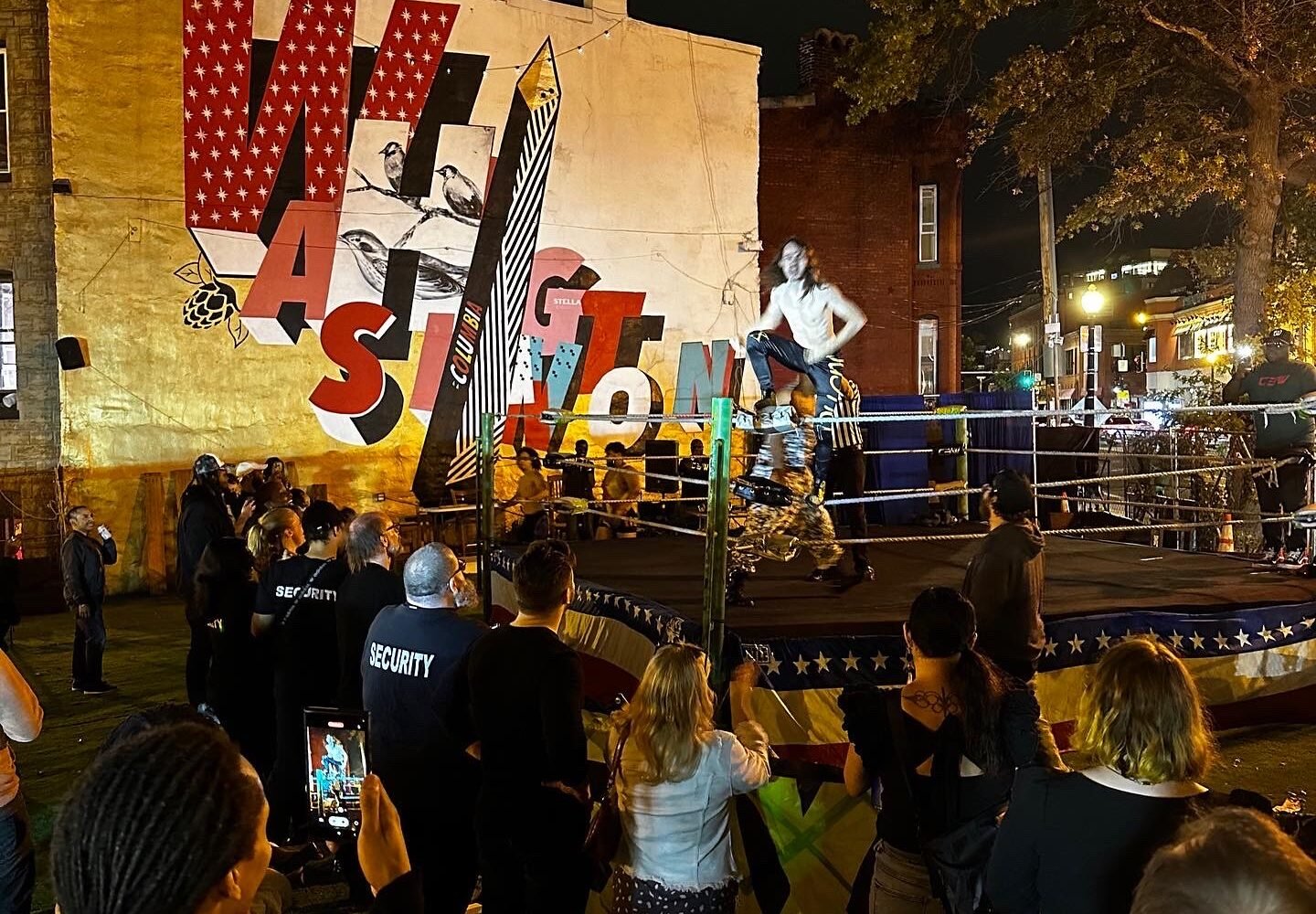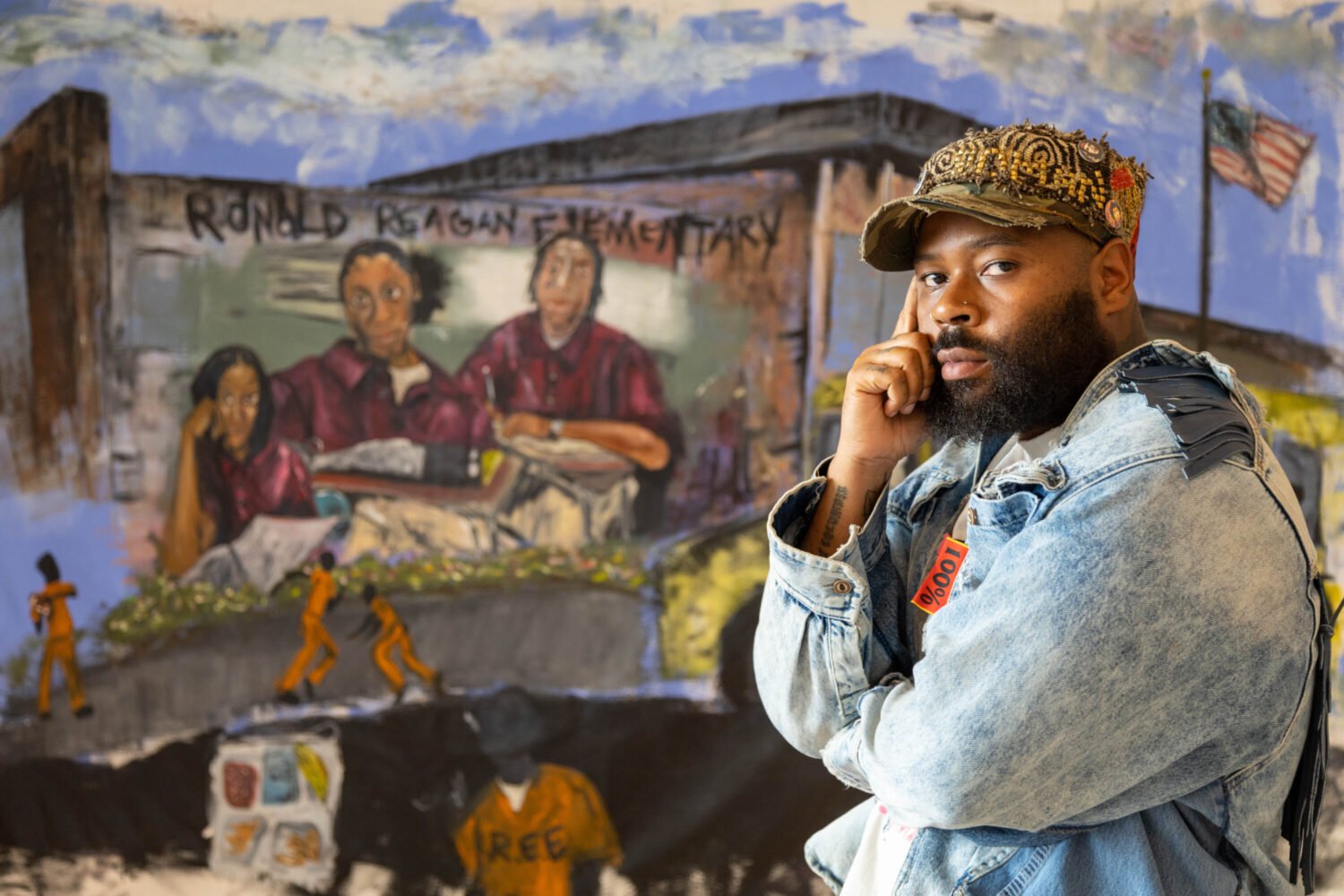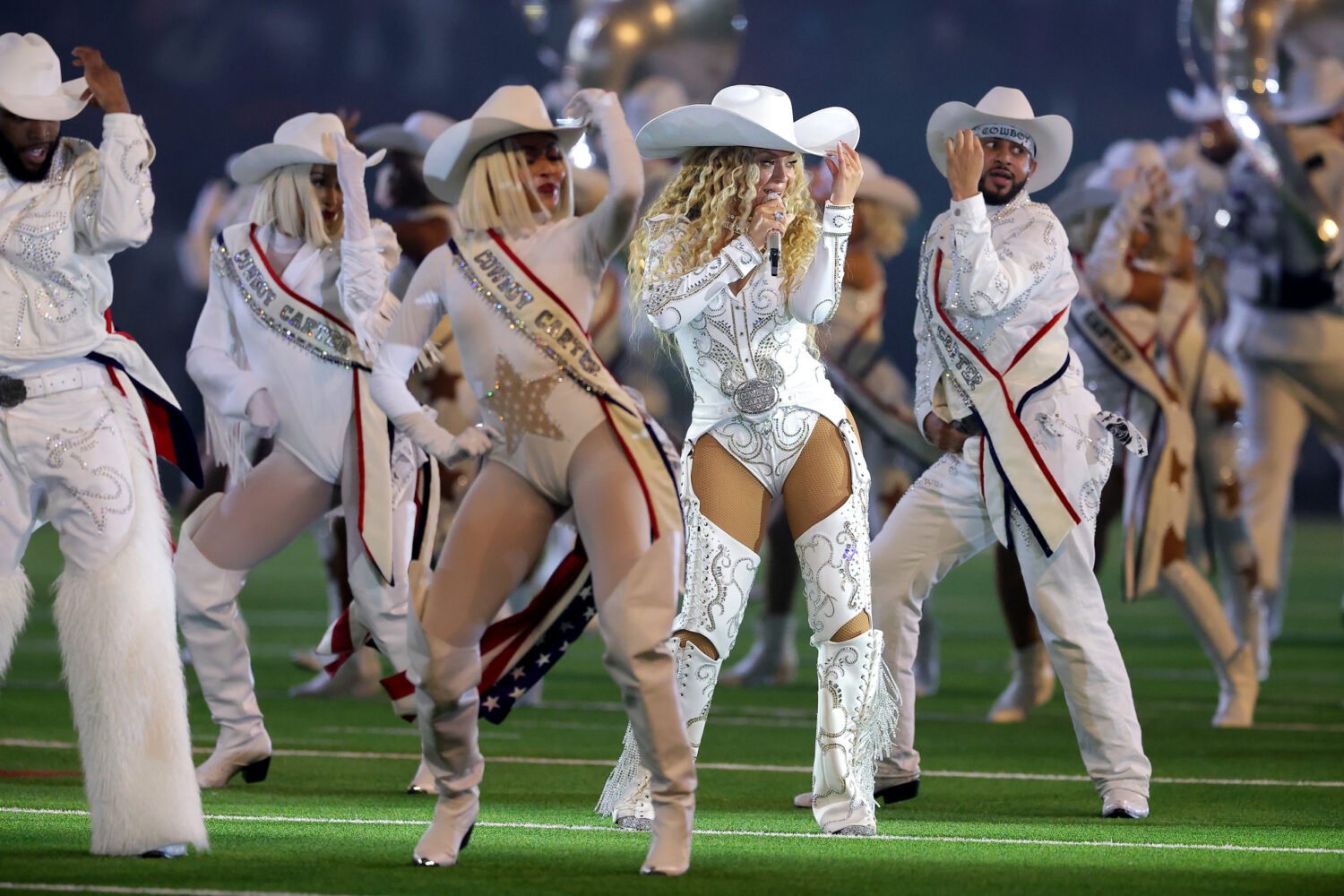It speaks volumes about the state of portraiture right now that the most mesmerizing
rendering of a subject currently on display at the National Portrait Gallery is the
languorous way
Bo Gehring captures corduroy. In “Jessica Wickham,” a five-minute, large-scale video installation,
Gehring draws a camera over his subject from head to toe with breathtaking stillness,
starting at her orange Crocs and lingering for what feels like eons on her nubby brown
pants. Every fiber of the material is distinct, every fragment of lint supersized.
It isn’t until the camera gets waist-high that we realize Jessica is breathing—a living,
moving portrait in infinitesimal HD.
Gehring’s portrait is the winner and the centerpiece of this year’s Outwin Boochever
Portrait Competition, dominating the room with its scale, its musical soundtrack (the
piece is timed perfectly to match Arvo Pärt’s celestial “Cantus in Memoriam Benjamin
Britten”), and its vitality. The exhibition, on display at the National Portrait Gallery
through February 2014, reveals 48 works chosen from more than 3,300 submissions, and
offers a cross-section of contemporary portraiture that’s quite thrilling to behold.
The diversity of media and approaches to subjects on display is broad (often, the
process is as important a part of the finished piece as the subject is), but the show
also has a sense of affirming optimism that comes as quite a surprise.
Take the second-place winner, for example:
Jennifer Levonian’s “Buffalo Milk Yogurt,” a watercolor animation about a friend of Levonian’s having
a minor breakdown in an eco-friendly grocery store. The subject,
Corey Fogal, contributed to the accompanying score, and though his animated existential crisis
is real, Levonian’s sketches add a sense of levity to the six-minute work. Perplexed
by modernity, Fogal singes James Joyce novels in his George Foreman grill, dunks his
head under water sprayers in the produce aisle, and stares, bewildered, at a naked
woman meditating outside the store who seems to be as out of place as he is. The work
itself is less a portrait of Fogal than it is a snapshot of a character recurring
throughout the centuries—an artist outside of his era.
Among the paintings,
Sean Cheetham’s self-portrait “Champagne Wishes and Caviar Dreams . . .” stands out for its Rembrandt-like
construction juxtaposed with a sharply modern affect. Cheetham sports a hoodie, a
cut on his cheek, and a black eye, but his gaze is poised and his face almost beatific,
like a fallen angel who’s lost a street fight. “City Girl” by
Vincent Giarrano places a tattooed blonde subject on a bed with pillowy white sheets and an intricately
carved wooden frame. The iPhone laying next to her represents modernity, but the rotary
phone in the background is as much of a throwback as the portrait’s setting. Just
because a portrait takes the familiar form of a painting, both artists suggest, doesn’t
mean it can’t be strikingly distinctive at the same time.
The exhibition displays works alongside text written by the artists explaining the
context they were created in, and the National Portrait Gallery has also created an
iPhone app to accompany the show with more information about the portraits and the
people who made them. Whether gazing at “Constellation—Mana,”
Kumi Yamashita’s portrait of her niece crafted by winding a single thread around a thousand or so
pins on a wooden panel, or
Saeri Kiritani’s “100 Pounds of Rice,” which re-creates the artist’s form out of bland white grains,
the text offers insight into the human condition as much as it illuminates the art.
The world—a complex, confusing, contradictory place—has always been thus, and art
is one of the more poignant and practical ways in which we try to get to the bottom
of it.
“Outwin Boochever Portrait Competition” is at the National Portrait Gallery through
February 23. More information can be found at the official website.

